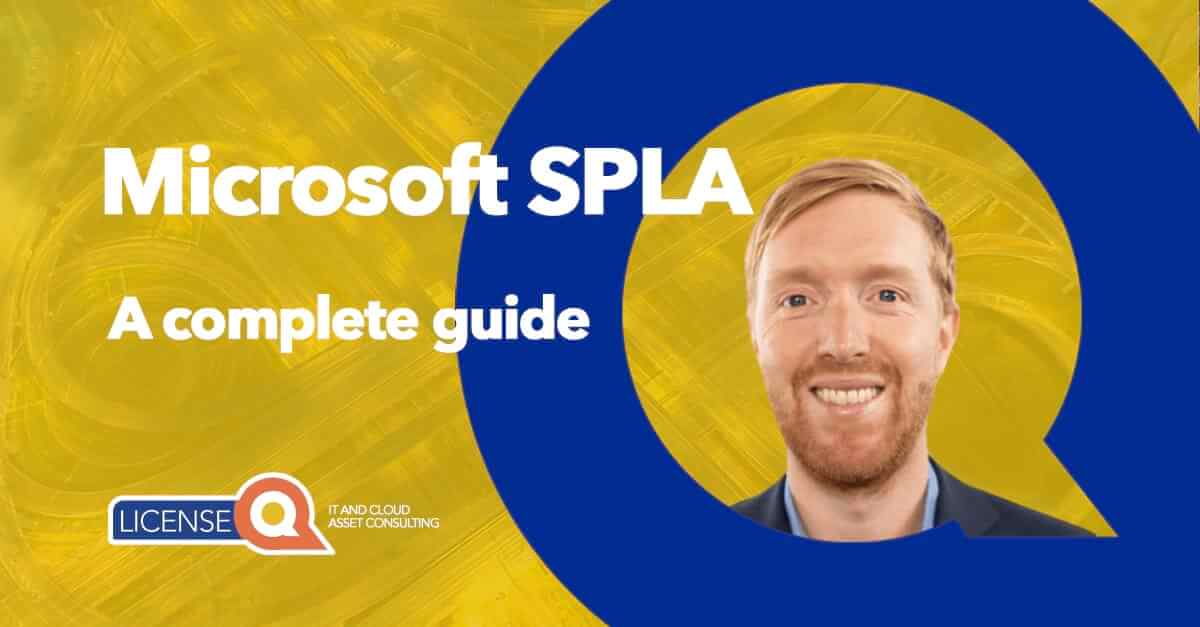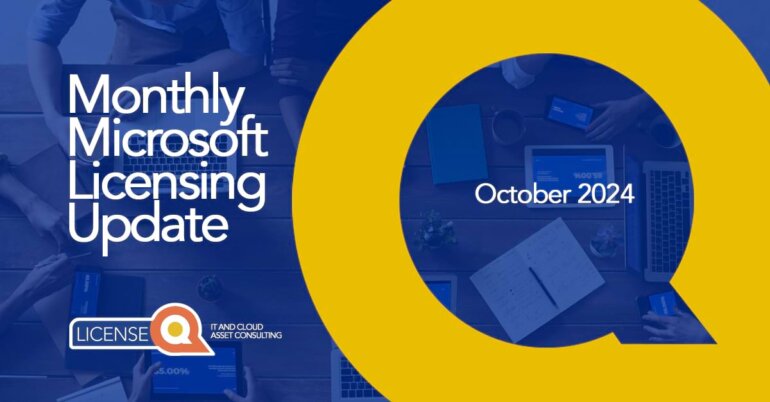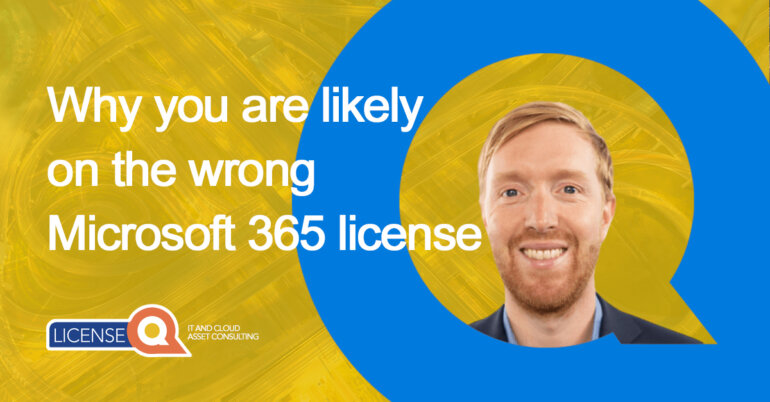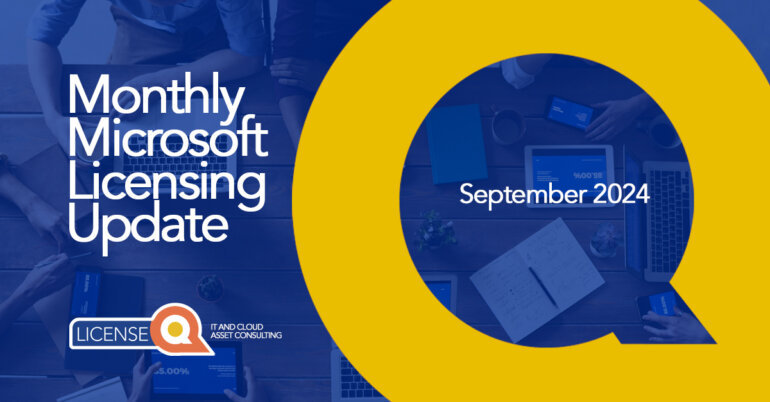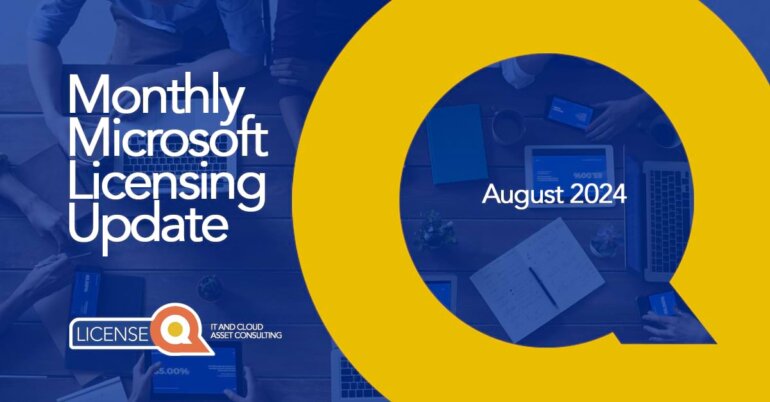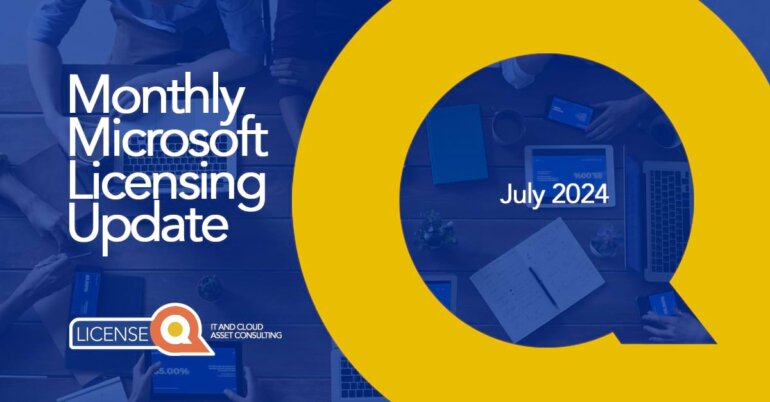Microsoft SPLA - a complete guide
Introduction to Microsoft SPLA
The Microsoft Services Provider License Agreement (SPLA) offers a flexible, subscription-based licensing model for hosting Microsoft products, eliminating the need for upfront purchases. It enables the provision of various hosted services, including web hosting and streaming, tailored specifically for organizations that serve end customers.
Through SPLA, service providers and ISVs can access the latest Microsoft technologies, ensuring compliance and enhancing their offerings. SPLA supports a range of software, from Windows Server to Microsoft 365, offering a scalable, cost-effective solution for businesses worldwide.
Microsoft Service Provider = a business that delivers hosted services to end customers using Microsoft products under the Service Provider License Agreement (SPLA).
Independent Software Vendor (ISV) = a business that develops, markets and sells software applications built on Microsoft technologies, often leveraging Microsoft platforms and development tools.
Key Features and benefits of SPLA
Microsoft’s SPLA is designed with flexibility and scalability in mind, offering a host of benefits and key features tailored to the needs of service providers and Independent Software Vendors (ISVs). This unique licensing agreement enables the provision of Microsoft products and services to end customers with unparalleled ease.
Let’s look at the key features of SPLA and, in the following section, the main benefits this contract model brings to both providers and their customers.
Key features SPLA
- Broad range of Microsoft products: Access to a comprehensive portfolio of Microsoft products from server products like Windows Server and SQL Server to productivity suites such as Office and Dynamics. This extensive selection allows service providers to tailor their offerings to meet the diverse needs of their customers, ensuring they can deliver the right solutions for any business scenario.
- Pay-As-You-Go model: SPLA’s pay-as-you-go pricing structure is another major appeal. Unlike traditional licensing models, it allows service providers to pay monthly based on actual usage. This model provides the financial flexibility to scale services up or down in response to customer demand, optimizing operational costs and eliminating the risks associated with over-provisioning.
- Flexibility in contract terms: Flexibility extends beyond SPLA’s payment model to its contract terms. Service providers can adjust their licensed offerings monthly, enabling them to respond dynamically to changes in the market or customer requirements.
Key benefits SPLA for Service Providers
- Scalability: Easily scale offerings to match customer demand without the need for extensive forecasting or long-term commitments.
- Cost management: The pay-as-you-go model aligns operational costs with revenue, improving cash flow management and reducing financial risk.
- Market responsiveness: Quickly adapt offerings to capitalize on new market opportunities or shifts in customer needs.
Key benefits SPLA for Customers
- Customized solutions: Access to a wide range of services tailored to specific business needs, without the complexity and cost of direct licensing agreements.
- Flexibility and scalability: Benefit from services that can scale with their business, ensuring they only pay for what they use.
- Reduced capital expenditure: Eliminate the need for significant upfront investment in software licenses, freeing up capital for other strategic initiatives.
The SPLA program provides a flexible and scalable licensing solution that aligns with the dynamic needs of service providers, allowing them to grow their services and respond to the evolving demands of the market.
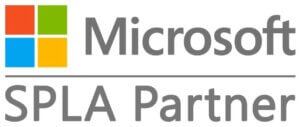
Eligibility and requirements for Microsoft SPLA
Participating in the SPLA program comes with specific eligibility criteria and requirements that must be met. Understanding these prerequisites is crucial for businesses considering SPLA as a licensing model for delivering Microsoft-based services.
Who is Eligible for SPLA?
SPLA is designed for organizations that provide hosted services to end customers. This includes a broad spectrum of business types, each with unique hosting needs:
- Web Hosting Providers: Companies offering website hosting services, virtual private server (VPS) hosting, or dedicated server hosting can leverage SPLA to provide the underlying Microsoft technologies needed for these services.
- Application Service Providers (ASPs): Organizations that deliver software applications as a service over the internet. ASPs use SPLA to license the Microsoft products that support their application hosting services.
- Independent Software Vendors (ISVs): ISVs that offer hosted applications can utilize SPLA to legally provide their software solutions built on Microsoft technologies to customers on a subscription basis.
- Managed Service Providers (MSPs): MSPs managing and delivering a range of IT services, including network, application, infrastructure, and security services through Microsoft products, are also eligible.
Requirements for SPLA
To take part in the SPLA program, service providers must meet certain requirements, ensuring they can manage the responsibilities of SPLA licensing:
- Service Provider Agreement: Interested parties must sign a Service Provider License Agreement with Microsoft or through a Microsoft authorized SPLA Reseller. This agreement outlines the terms and conditions of the SPLA program.
- Monthly reporting: SPLA participants are required to report their usage of Microsoft products monthly. This ensures that billing is accurate and reflects the actual services provided to end customers.
- Compliance with Microsoft policies: Adherence to Microsoft’s use rights and other policies detailed in the SPLA agreement is mandatory. This includes ensuring that only authorized Microsoft software is used and that it is used in accordance with the SPLA terms.
- End-user agreement: Service providers must ensure that their end customers agree to terms that do not conflict with the SPLA terms and conditions, typically through a service agreement or terms of service.
- Audit readiness: Participants in the SPLA program must be prepared for audits by Microsoft. These audits are designed to ensure compliance with the SPLA terms, including accurate reporting of usage and adherence to licensing requirements.
By meeting these eligibility criteria and requirements, service providers can take full advantage of the SPLA program to offer a range of Microsoft-based services to their customers.

SPLA licensing model explained
SPLA provides a range of licensing models to accommodate the varied ways in which service providers and ISVs deliver services to their customers. These models are designed to align with different hosting scenarios, ensuring that service providers can offer Microsoft products in a manner that is both compliant and cost-effective.
Here, we delve into the primary SPLA licensing models: per user, per processor, and per core, outlining their applications and advantages.
Per user licensing model
The per user model is tailored for scenarios where services are accessed by individual users, making it ideal for hosted applications that require user-specific access rights. Under this model, the service provider licenses the right for a single user to access the service, regardless of the number of devices or sessions they use.
This model is particularly cost-effective for services that are heavily accessed across multiple devices, such as hosted email or collaboration platforms like Microsoft Exchange Online and SharePoint Online.
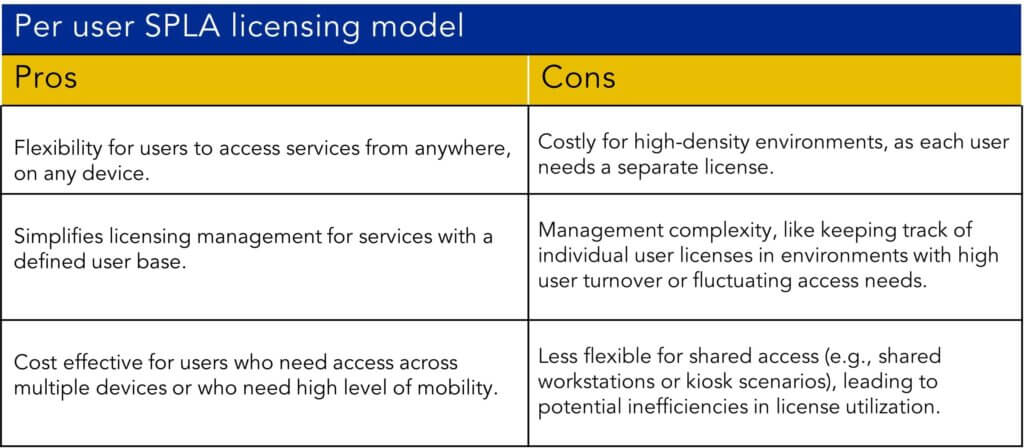
The products included in this per user licensing model include:
- Microsoft Desktop Applications (Office, Project and Visio)
- Application Servers like Exchange Server, SharePoint Server and Skype for Business Server
- Remote Desktop Services or RDS
- Visual Studio
- System Center for clients (For Server see per licensing model below)
Per processor licensing model
The per processor model applies to services hosted on physical servers, where licenses are allocated based on the number of processors in the server. This model is a good fit for high-density hosting environments where a server hosts services for numerous users or instances. It’s particularly relevant for legacy applications or when precise user counts are unpredictable.
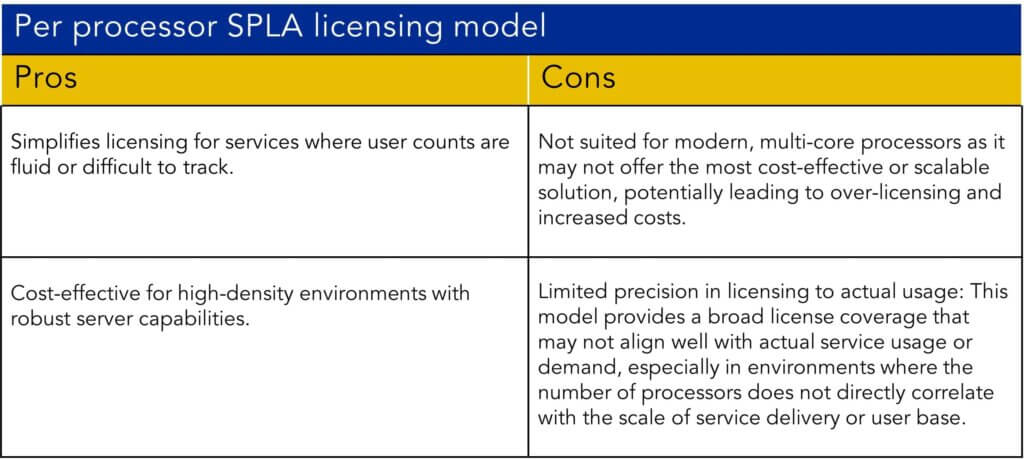
Per core licensing model
The per core model is an evolution of the per processor model, designed to align more closely with modern, multi-core server environments. Licenses are allocated based on the number of cores in each processor, offering a more granular approach to licensing.
This model is well-suited for data-intensive services such as databases and analytics platforms, where the workload can be scaled according to the server’s core capacity.
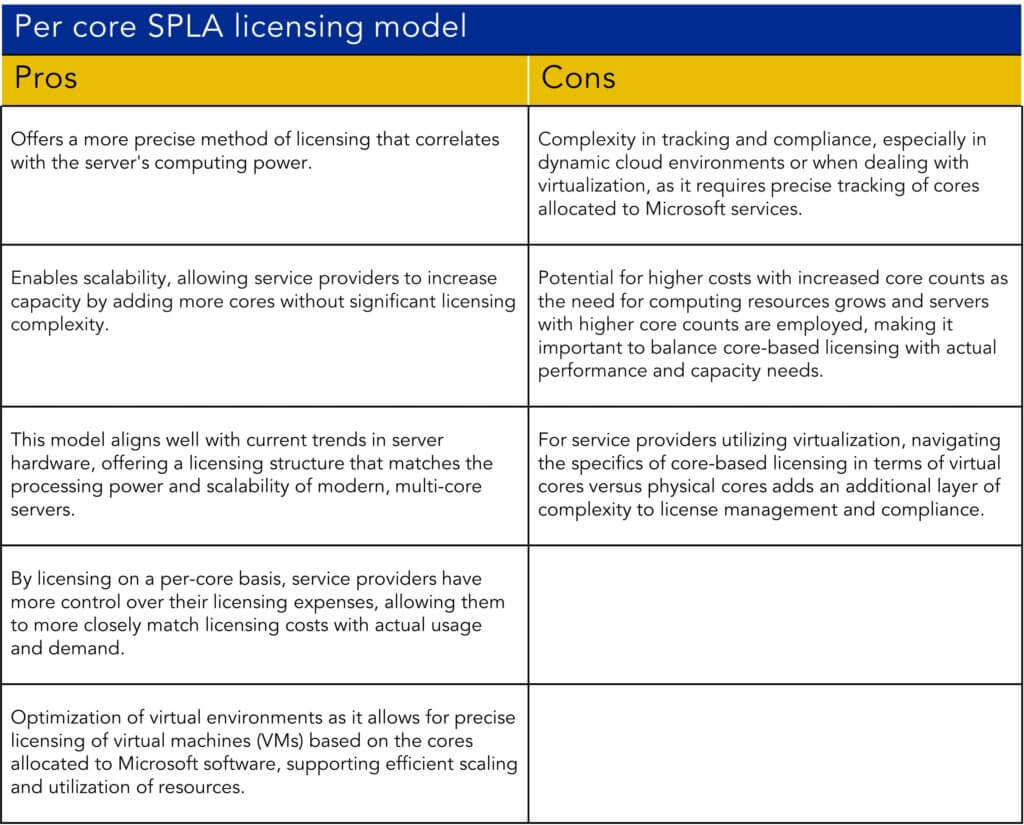
Products in the per core (or per processor) license category include:
- SQL Server
- BizTalk Server
- System Center
- Windows Server
- SharePoint (External websites)
General Consideration
Across all models, a key challenge is aligning the chosen licensing model with the specific service delivery strategy, customer usage patterns and the technical architecture of the service offering. Service providers must carefully evaluate the advantages and disadvantages of each model in the context of their own operations to ensure optimal licensing efficiency, compliance and cost-effectiveness.
Reach out to our LicenseQ experts today to analyze your specific business case and to determine which licensing model is right for you.
SPLA Product Offerings
The SPLA program offers a wide range of Microsoft products, enabling service providers to deliver hosted solutions to meet diverse customer needs. From foundational server technologies to advanced business applications and productivity suites, SPLA covers the spectrum of Microsoft’s software offerings.

In addition to these core offerings, SPLA also includes access to specialized software that addresses specific industry needs or advanced technology requirements, such as AI, machine learning and cybersecurity tools. Typically, the cloud services mentioned in the table above are part of the CSP program.
Pricing & payment SPLA
Pricing and payment in SPLA are flexible and predictable, tailored to the needs of service providers and ISVs. Specific pricing details are not publicly disclosed due to their variability and the confidential agreements between Microsoft and service providers. However, the general framework of SPLA’s pricing and payment is designed to support the scalability and operational flexibility required by hosted services.
SPLA partners set their price towards end customers based on the price list they receive from Microsoft, with potentially an added margin. This is similar to indirect models in Volume Licensing like CSP and MPSA.
Monthly reporting & payment
The cornerstone of SPLA’s pricing structure is its monthly reporting and payment process, which allows service providers to pay only for the licenses they have actually used or made available to end customers during the preceding month. This approach ensures that costs directly correlate with revenue, enhancing cash flow management and operational efficiency.
This process works are follows:
- Usage tracking: Service providers are responsible for tracking their usage of Microsoft products across their services each month. This includes the number of users accessing a service, the number of processors or cores utilized, and any other metrics relevant to the licensing model chosen.
- Monthly reporting: At the end of each month, service providers submit a usage report to Microsoft or a designated SPLA Reseller. This report details the specific Microsoft products used, the licensing models applied, and the quantity of licenses required based on the service provider’s customer usage.
- Payment: Based on the monthly report, service providers are invoiced for the licenses used. Payment terms are typically set forth in the SPLA agreement and usually require payment within a specified period after invoicing.
Financial commitments & minimums
SPLA is designed to minimize upfront financial commitments, providing a pay-as-you-go model that aligns service providers’ costs with their actual usage. However, some agreements may include minimum usage requirements or other financial commitments that service providers agree to meet as part of their SPLA contract. These commitments are generally established to ensure a baseline level of participation in the program and can vary based on the agreement’s terms and the service provider’s negotiation with Microsoft or its SPLA Resellers.
Flexibility & scalability
The SPLA pricing and payment structure offers significant flexibility, allowing service providers to adjust their license usage monthly to reflect changes in customer demand. This scalability is crucial for managing growth and adapting to fluctuations in the market, ensuring that service providers can efficiently align their licensing costs with their business needs.
While this flexibility is wanted, it is also the biggest problem SPLA partners face. They often struggle to report based on actual usage. This means Microsoft heavily audits SPLA partners to see if their reports are up to standard and accurate. If you’ve been a SPLA partner for a few years, you’ve undoubtedly have had multiple audits (usually once every 2 to 3 years). This is not showing signs of slowing down, seeing the level of out of compliance partners that Microsoft encounters.

Compliance & auditing in SPLA
Adhering to the terms of the Microsoft Service Provider License Agreement is crucial for service providers, both to maintain the integrity of their services and to avoid potential legal and financial repercussions. Compliance ensures that service providers are using Microsoft products within the scope of their agreement, while regular auditing by Microsoft helps maintain transparency and accountability.
Understanding the audit process and adopting best practices for compliance is essential for all SPLA participants. Visit our Microsoft Audit Defense page for more information on how we can help your organization.
Microsoft’s audit process
Microsoft reserves the right to conduct audits on SPLA participants to ensure compliance with the agreement terms. These audits can be announced with a notice period, typically 30 days, giving service providers time to prepare their documentation and records.
When you receive an audit letter, you must respond and comply with the audit terms outlined in the agreement. The audits are usually conducted by a big consultancy like Deloitte, EY, KPMG or PWC.
How audits are conducted:
- Initial notification: Microsoft or a third-party auditor appointed by Microsoft will notify the service provider of the upcoming audit. You have to respond within 30 days.
- Documentation review: The auditor will ask you to provide snapshots of your hosting data and any records you supposedly hold. You as the service provider will need to supply the requested documentation, which may include copies of SPLA reports, deployment data, and access to systems for verification. A lookback period is usually involved, and this can go as far back as 5 years. You can limit the scope if you negotiate this ahead of time.
- Findings and resolution: If you are found to be out of compliance after the auditor conducts its review, you will be presented with a bill for any discrepancies or issues in excess of 5% of what you have been reporting. A penalty fee of 25% will apply on the base prices that Microsoft bills you. If you are out of compliance, a negotiation will be able to help you shed light on your situation and can help you reduce the amount. Sometimes you can rectify the situation and minimize the damage, though usually if non-compliance has been found, you will be billed for a certain amount.
Best practices for compliance and audit preparation
- Accurate and timely reporting: Ensure that monthly usage reports are accurate and submitted on time. Implement internal controls and audit trails to track the deployment and usage of Microsoft products.
- Regular internal reviews: Conduct regular internal reviews or self-audits to ensure ongoing compliance with SPLA terms. This can help identify and rectify any issues before an official audit.
- Documentation and record-keeping: Maintain thorough records of licenses, deployments, and user access. Documentation should be organized and readily accessible for audit purposes.
- Understanding SPLA terms: Stay informed about the SPLA agreement terms, including any updates or changes. This includes understanding the licensing models and usage rights for the Microsoft products offered.
- Training and awareness: Ensure that staff responsible for managing SPLA licenses and reporting are well-trained and aware of compliance requirements. Regular updates and training can help prevent inadvertent violations.
- Seek expert advice: Consider consulting with SPLA experts or legal advisors to navigate complex licensing scenarios or to prepare for an audit. Parties like LicenseQ can offer insights and strategies for maintaining compliance. In the meantime, read our blog How to deal with a Microsoft audit.
- Utilize SPLA tools and resources: Leverage tools and resources provided by Microsoft or SPLA resellers designed to aid in license management and compliance. For instance, you can check out top tier tools like Octopus Cloud.

Benefits of working with a Microsoft SPLA Reseller
When you become a SPLA partner, you must partner with a Microsoft SPLA Reseller. This significantly simplifies the SPLA process, especially for small and medium sized services providers. As these organizations have less knowledgeable people in their organization and limited means of access to Microsoft resources due to their size. It offers a range of benefits that streamline operations, enhance compliance and may even lead to cost savings.
Key advantages of working with a SPLA Reseller:
Expert licensing optimization
- Customized solutions: SPLA Resellers can offer tailored advice, ensuring service providers utilize the most cost-effective and appropriate licensing options for their specific service offerings.
- Efficiency and cost savings: With their expertise, resellers can help identify opportunities to optimize license usage, potentially leading to significant cost savings by avoiding over-licensing and aligning expenses with actual customer usage.
Enhanced compliance support
- Compliance assurance: Staying compliant with SPLA terms can be daunting. Resellers provide invaluable support in understanding and adhering to these terms, reducing the risk of non-compliance and the potential for costly audits.
- Audit preparation: In the event of a Microsoft audit, resellers can offer guidance and support to ensure that the service provider is well-prepared, with all necessary documentation and reporting in place.
Access to better pricing and terms
- Negotiation leverage: SPLA Resellers often have significant negotiating power with Microsoft due to the volume of business they conduct. This can result in more favorable pricing and terms for their clients, which may not be directly accessible to smaller service providers.
- Flexible payment options: Resellers may offer more flexible payment terms, helping service providers manage cash flow more effectively by aligning payments with their revenue cycles.
Streamlined administration and reporting
- Simplified reporting: Resellers can assist with the monthly reporting requirements of SPLA, helping to ensure accuracy and timeliness. This administrative support allows service providers to focus more on their core business operations.
- Technical support and training: Beyond licensing, resellers often provide technical support, training, and access to additional resources that can enhance the service provider’s offerings and operational capabilities.
Strategic business advice
- Market insights: Working closely with various service providers, resellers have a broad view of the market and can offer strategic advice on trends, opportunities, and competitive positioning.
- Growth support: As service providers expand their offerings or enter new markets, resellers can provide guidance on scaling their licensing effectively, ensuring that growth is supported by a solid licensing foundation.
An even better alternative: work with independent licensing experts
Obviously there are a lot of benefits of working with a SPLA Reseller, though an alternative and probably better approach would be to use the services of independent licensing advisories like LicenseQ. A company like LicenseQ is expertly suited to advise on SPLA and has an unbiased view of your situation. This usually leads to better and higher savings on your licensing costs.

Future of SPLA and Cloud Services
The landscape of cloud computing is continuously evolving, with Microsoft at the forefront of this transformation through its Azure, Microsoft 365 and other cloud services offer. The SPLA program enables service providers to deliver hosted solutions leveraging Microsoft’s extensive software product portfolio.
As we look to the future, SPLA’s role and relevance within the burgeoning cloud ecosystem are poised for adaptation and might reduce in size due to the uptake in cloud services and connected contract models like CSP. CSP also offers options to purchase software subscriptions, making it a competitive alternative to SPLA. However, in CSP purchase cannot be done in arrears nor on a monthly basis (only annually).
Integration with Microsoft’s cloud ecosystem
Microsoft’s investment in Azure and Microsoft 365 signifies a strategic shift towards cloud-native services, emphasizing scalability, security, and innovation. SPLA will need to evolve to better integrate with these platforms, offering service providers more seamless pathways to leverage cloud technologies. This could mean enhanced options for bundling Azure services with traditional SPLA offerings or more straightforward mechanisms for extending on-premises licenses to the cloud. This issue has previously been communicated to Microsoft, leading to adjustments in their licensing requirements, such as the elimination of the QMTH Amendment for multi-tenant hosting providers.
Emphasis on hybrid solutions
As businesses seek flexibility in their digital transformation journeys, hybrid cloud environments are becoming increasingly popular. This trend positions SPLA as an optional facilitator for service providers aiming to offer solutions that bridge on-premises infrastructure with cloud capabilities. Future iterations of SPLA may offer more nuanced licensing options catering to hybrid deployments, enabling service providers to deliver comprehensive, integrated solutions that meet diverse customer needs.
It’s also possible that Microsoft may transition away from the SPLA model, integrating those options into the NCE framework of the CSP model and making it a core component of the MCA framework. However, as of this writing, the future of this transition remains uncertain. For the time being, it appears SPLA is here to stay (for a while longer).
Focus on security and compliance
With cybersecurity threats on the rise and regulatory requirements becoming more stringent, service providers are under pressure to ensure their offerings are both secure and compliant. SPLA’s future will likely emphasize security and compliance features, enabling service providers to meet these demands confidently. This could manifest as bundled security products, enhanced compliance reporting tools, or specialized licensing options for secure and compliant cloud services.
Adaptation to consumption-based models
The cloud computing industry’s momentum is increasingly towards consumption-based pricing models, reflecting customers’ desire for flexibility and scalability. SPLA may adapt by offering more granular, usage-based licensing options, aligning with the broader industry shift towards pay-as-you-go pricing. This adaptation would enable service providers to offer more competitive, customer-centric solutions, ensuring they can respond agilely to market demands.
Again, this could be the point at which Microsoft expects SPLA partners to transition towards the so-called CSP-hoster model.
Innovation and specialization
As cloud services mature, differentiation becomes key for service providers seeking to stand out in a crowded market. SPLA’s future could involve more specialized licensing options that support innovative use cases, such as artificial intelligence, Internet of Things (IoT), and edge computing. By facilitating access to cutting-edge Microsoft technologies, SPLA can empower service providers to develop unique, high-value solutions that cater to specific industry needs or emerging market trends.
As cloud computing continues to redefine the IT industry, SPLA will remain a tool for service providers, enabling them to leverage Microsoft’s innovations effectively. To stay competitive and relevant, service providers must stay attuned to these changes, embracing the opportunities presented by SPLA to meet the dynamic needs of their customers in the cloud era, while also looking to alternatives like the CSP.
Conclusion
The Microsoft SPLA represents a pivotal shift from traditional software licensing, offering service providers and ISVs a flexible, scalable and cost-effective way to deliver Microsoft’s comprehensive range of products to their end customers. By understanding the intricacies of SPLA, from its broad product offerings and versatile licensing models to its monthly reporting and payment structure, service providers can unlock new opportunities for growth, enhance their service quality, and maintain compliance with Microsoft’s licensing policies.
As we look to the future, the role of SPLA in facilitating access to cloud services and supporting the digital transformation journeys of businesses worldwide is unmistakably significant to this day.
Looking to navigate SPLA’s complexities? Contact LicenseQ for tailored advice from an independent consultant, ensuring you leverage SPLA’s full potential for your business success.
FAQ
What is Microsoft SPLA?
Microsoft Services Provider License Agreement (SPLA) allows service providers and Independent Software Vendors (ISVs) to offer Microsoft product licenses on a monthly subscription basis. It enables the hosting of services like web hosting, streaming services, and content delivery.
Who can benefit from SPLA?
SPLA is ideal for organizations providing hosted services to end customers, including web hosting providers, application service providers (ASPs), independent software vendors (ISVs), and managed service providers (MSPs).
What products are available under SPLA?
SPLA covers a broad range of Microsoft products, including but not limited to Windows Server, Microsoft SQL Server, Microsoft Exchange Server, Microsoft SharePoint, and the entire suite of Microsoft 365 applications.
What are the main benefits of using Microsoft SPLA for service providers?
The main benefits of SPLA is scalability and flexibility with SPLA’s monthly licensing model. Service providers can scale their license quantities based on customer demand, without significant initial investment or long-term commitments. The pay-as-you-go model enables service providers to align costs with revenue.
What are the key features of SPLA?
SPLA’s key features include access to a comprehensive portfolio of Microsoft software products, a pay-as-you-go pricing model, and flexibility in contract terms, allowing monthly adjustments to licensed offerings.
What are the main licensing models in SPLA?
Microsoft SPLA offers three primary licensing models to accommodate various service delivery methods: Per User, Per Processor and Per Core.
How does SPLA pricing work?
While specific pricing details are confidential, SPLA operates on a monthly reporting and payment process based on actual usage, providing financial flexibility and minimizing upfront costs.
Why is the pay-as-you-go model considered an advantage for service providers under SPLA?
The pay-as-you-go model under SPLA is advantageous because it provides financial flexibility, allowing service providers to adapt their licensing costs directly to their revenue. This model helps in managing cash flow more effectively by eliminating the need for large upfront payments for software licenses, making it easier to start new projects or expand existing services without significant initial investment.
What are the requirements for participating in SPLA?
Participants must sign a Service Provider License Agreement, report monthly usage, comply with Microsoft policies, ensure end customers agree to terms that do not conflict with SPLA, and be prepared for Microsoft audits.
What are the benefits of working with a Microsoft SPLA Reseller?
Partnering with your mandatory SPLA Reseller can offer expert licensing optimization, enhanced compliance support, access to better pricing and terms, streamlined administration and reporting, and strategic business advice. Mainly because this reseller is better equipped to deal with this than (smaller) SPLA partners might be. Additionally, get an independent view from a third party like LicenseQ.
How is SPLA evolving with cloud services?
SPLA is expected to adapt to the evolving cloud landscape, with potential for better integration with Azure and Microsoft 365, emphasis on hybrid solutions, focus on security and compliance, and adaptation to consumption-based models. Though as an alternative, Microsoft can potentially shift to the CSP model.
What are the best practices for SPLA compliance and audit preparation?
Best practices include accurate and timely reporting, regular internal reviews, thorough documentation and record-keeping, understanding SPLA terms, training and awareness for staff, consulting with experts, and utilizing SPLA tools and resources.

